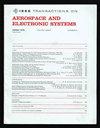飞行轨迹预测的目标导向扩散模型
IF 5.7
2区 计算机科学
Q1 ENGINEERING, AEROSPACE
IEEE Transactions on Aerospace and Electronic Systems
Pub Date : 2025-01-30
DOI:10.1109/TAES.2025.3536436
引用次数: 0
摘要
飞行轨迹预测是空中交通管制领域的一项重要任务。以往的方法通常采用单阶段或短期意图导向的预测范式,存在轨迹预测多样性不足、精度有限和可解释性等问题。与现有的飞行轨迹预测模型不同,本文提出了一种面向目标的飞行轨迹预测扩散模型。GooDFlight是一个长期的意图导向、强调多样性的框架,它将飞行轨迹预测过程解耦为两个阶段:目标估计和轨迹预测。在第一阶段,我们提出了一种先有后全的目标估计方法,以充分覆盖飞行模式的宏观不确定性,然后定制交互感知的联合目标分布,将飞行意图从单一的、确定性的地面事实扩展到经验意图分布。在第二阶段,我们采用基于变压器的扩散模型来生成基于意图估计的随机飞行轨迹,在第一阶段估计的每种模式下建模飞行操作中的微观不确定性。在评估指标方面,现有的指标难以准确地反映模型处理轨迹自然不确定性的能力。我们进一步提出了一个简单而有效的全球-局部终点方差(GLeV)度量来评估社会接受下预测轨迹的多样性。我们提出的方法在TrajAir上进行了深入验证,TrajAir是一个从匹兹堡-巴特勒地区机场(一个无塔架的通用航空机场)的实际空中交通管制环境中收集的大规模数据集。实验结果表明,该方法在精度和多样性方面都明显优于其他方法,具有良好的可解释性。本文章由计算机程序翻译,如有差异,请以英文原文为准。
GooDFlight: Goal-Oriented Diffusion Model for Flight Trajectory Prediction
Flight trajectory prediction is an essential task in the air traffic control field. Previous approaches to this problem usually follow a single-stage or short-term intention-guided prediction paradigm, which suffers from problems such as insufficient trajectory prediction diversity, limited accuracy, and interpretability. Different from existing paradigms, in this article, we present GooDFlight—A goal-oriented diffusion model for flight trajectory prediction. GooDFlight is a long-term intention-guided, diversity-emphasizing framework that decouples the flight trajectory prediction process into two stages: goal estimation and trajectory prediction. In the first stage, we propose a one-then-all goal estimation method to sufficiently cover the macro-uncertainty in flight patterns and then tailor the interaction-aware joint goal distribution, which extends the flight intention from a single, deterministic ground truth to the empirical intention distribution from the similar experience. In the second stage, we employ a transformer-based diffusion model to generate stochastic flight trajectories conditioned on the intention estimations, modeling the micro-uncertainty in flight operations under each pattern estimated in stage one. In terms of evaluation metrics, existing metrics have difficulties in accurately reflecting the model's ability to handle the natural uncertainty of trajectories. We further propose a simple yet effective global-local endpoints variance (GLeV) metric for evaluating the diversity of predicted trajectories under social acceptance. Our proposed method is validated in-depth on TrajAir, a large-scale dataset collected from the real-world air traffic control environment at the Pittsburgh-Butler Regional Airport, a nontowered general aviation airport. The experimental results demonstrate that the proposed method significantly outperforms other methods in terms of both accuracy and diversity with superior interpretability.
求助全文
通过发布文献求助,成功后即可免费获取论文全文。
去求助
来源期刊
CiteScore
7.80
自引率
13.60%
发文量
433
审稿时长
8.7 months
期刊介绍:
IEEE Transactions on Aerospace and Electronic Systems focuses on the organization, design, development, integration, and operation of complex systems for space, air, ocean, or ground environment. These systems include, but are not limited to, navigation, avionics, spacecraft, aerospace power, radar, sonar, telemetry, defense, transportation, automated testing, and command and control.

 求助内容:
求助内容: 应助结果提醒方式:
应助结果提醒方式:


